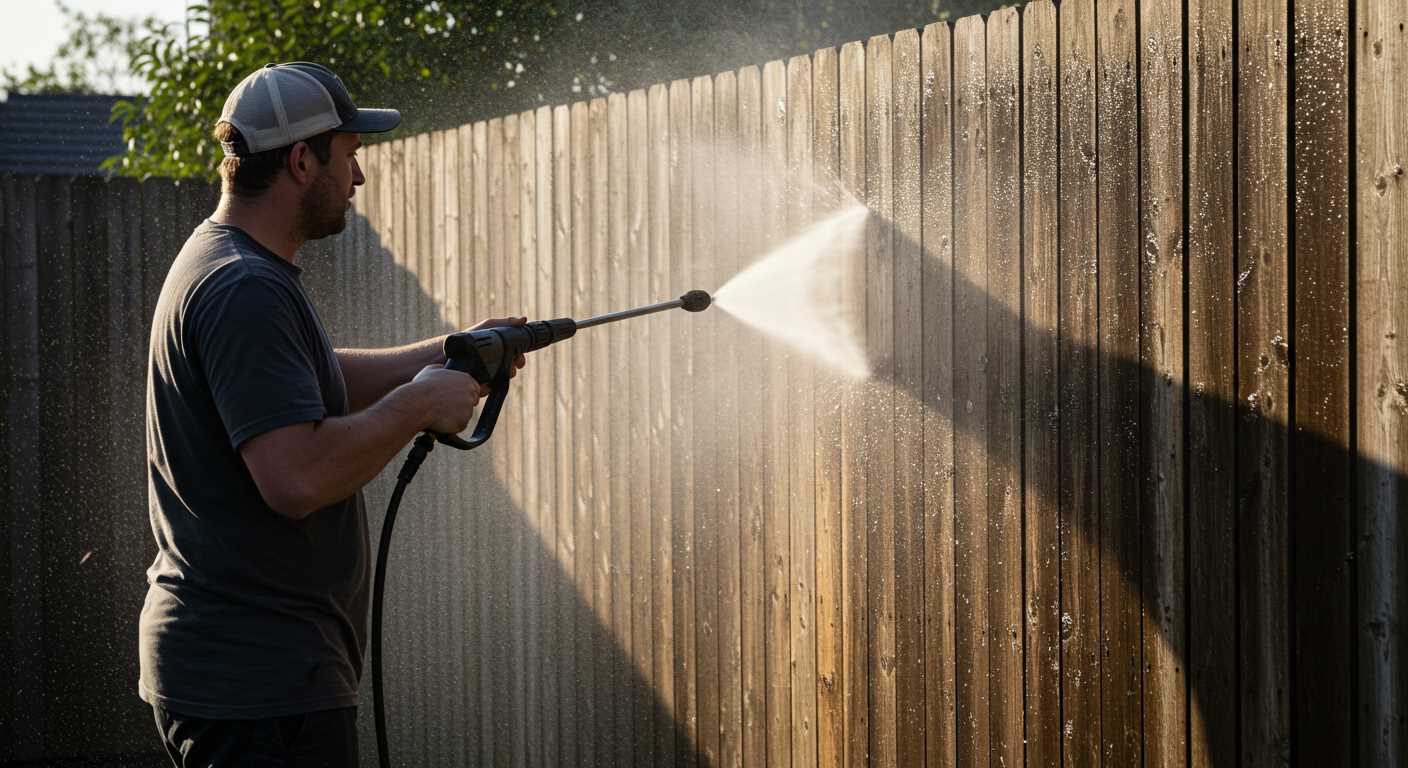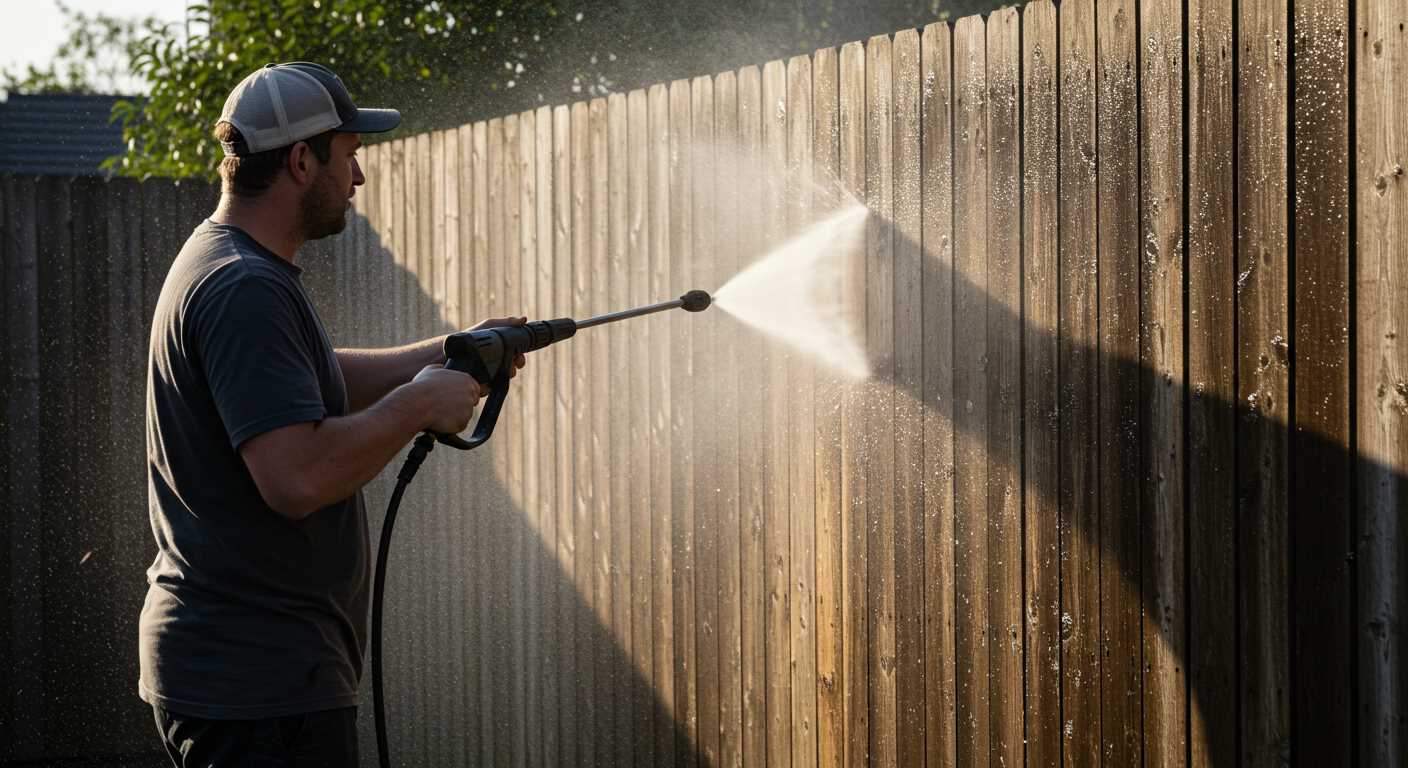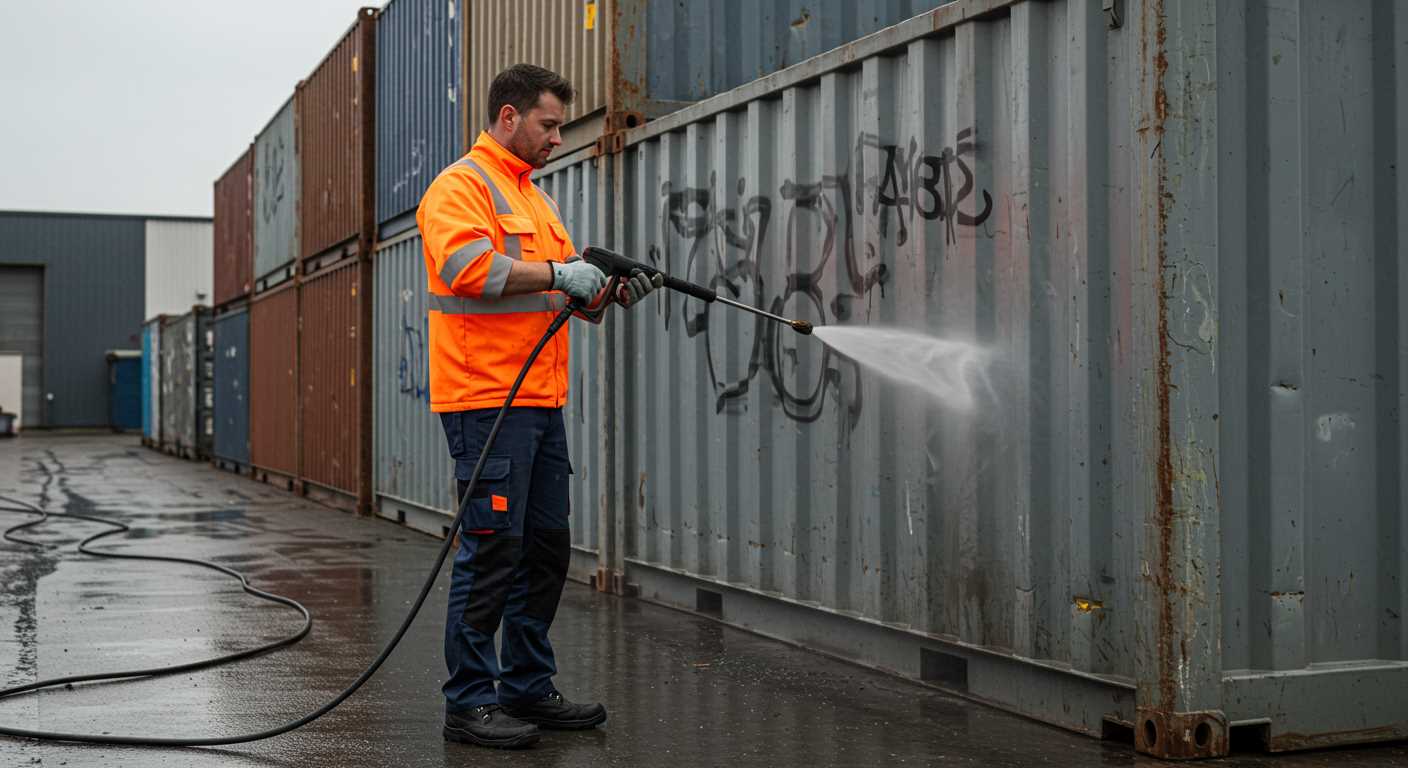




Begin by choosing the right nozzle for your high-pressure sprayer. A 25-degree nozzle often works wonders for most marine surfaces, striking a balance between power and control. I remember the first time I tackled a stubborn layer on a friend’s vessel; using a 15-degree nozzle left marks on the gel coat, while the 25-degree made quick work of the grime without damaging the surface.
Adjust the pressure setting appropriately; too much force can lead to scratches or even delamination. I generally set my machine to around 2000 PSI for typical cleaning tasks. On one occasion, I was too ambitious and cranked it up, resulting in a costly repair. Always start lower and increase as necessary.
Maintain a consistent distance of around 12 to 18 inches from the surface while spraying. This distance allows for thorough cleaning while avoiding damage. I learned this the hard way when I got too close and left a permanent mark on the hull of my own craft. Always work in sections, overlapping slightly to ensure complete coverage.
Apply a marine-specific cleaner before using the sprayer. Many products are available that break down stubborn deposits effectively. I’ve found that letting the cleaner sit for a few minutes before rinsing greatly enhances results. After all, patience pays off, especially when you want to keep your vessel looking pristine.
Finally, rinse thoroughly from the top down, as this helps to prevent any leftover debris from sticking to areas you’ve already cleaned. I’ve had days where I thought I was finished, only to find remnants of dirt lurking in the corners. A thorough rinse guarantees a polished finish.
Choosing the Right Pressure Washer for Hull Cleaning
For efficient cleaning, selecting a unit that matches the specific needs of your task is crucial. Based on my experience, here are key factors to consider:
- Pressure Rating: Aim for a model with at least 2000 PSI. This strength effectively tackles marine growth and stubborn stains.
- Flow Rate: A higher flow rate, measured in gallons per minute (GPM), helps in rinsing and flushing away debris quickly. Look for a washer with a minimum of 1.5 GPM.
- Type of Washer: Electric models are quieter and easier to handle, while gas-powered ones deliver more power for tough jobs. Choose based on your frequency of use and preference.
- Attachment Compatibility: Ensure the unit can accommodate different nozzles and brushes. A rotating brush or a wide spray nozzle can significantly enhance cleaning performance.
- Portability: A lightweight, easy-to-move design can save time and effort, especially when working around a marina.
I’ve used various models over the years, and I found that investing in a reliable brand often pays off in longevity and performance. For instance, my trusty Ryobi has been a workhorse, but I encountered some starting issues recently. If you face similar problems, check out this guide on resolving common problems troubleshooting issues with starting your ryobi pressure washer.
Lastly, always consider the warranty and customer support. A solid warranty can save you headaches down the line if you encounter any issues. Choose wisely, and your cleaning tasks will become much simpler and more efficient.
Preparing Your Vessel for a Thorough Clean
Before you initiate the cleaning process, ensure your craft is properly positioned. Secure it on a stable surface, preferably on a trailer or at a dry dock. This prevents any unwanted movement during the wash. I recall a time when I neglected this step, and it resulted in a less than efficient clean-up. A stable platform is non-negotiable.
Next, gather your supplies. You’ll need protective gear such as gloves and goggles to shield yourself from debris and water spray. I once underestimated the power of a jet stream and ended up with a bruised arm. Trust me, safety should always come first.
Inspect the exterior of your vessel. Remove any loose items, like fenders or lines, that could interfere with the washing process. A clean deck simplifies everything, and you’ll avoid the frustration of constantly moving things out of the way. I made the mistake of overlooking this once; it turned a quick task into a lengthy chore.
Cover any sensitive areas, such as electronics or open hatches, with plastic sheeting or waterproof covers. I learned this the hard way when water seeped into an exposed compartment, causing electrical issues. A little preparation goes a long way.
Consider the environmental impact of your cleaning. Make sure to contain any runoff, especially if using detergents. Setting up a barrier with a tarp can help manage the water flow. I’ve seen many individuals neglect this, leading to fines or complaints from neighbours.
Lastly, if you’re looking to enhance your cleaning skills further, I recommend checking out resources like how to clean an old aquarium glass. The techniques can provide valuable insights applicable to your vessel care.
| Preparation Step | Description |
|---|---|
| Secure Your Vessel | Position on a stable surface to avoid movement. |
| Gather Supplies | Collect protective gear and cleaning tools. |
| Inspect and Clear | Remove loose items from the deck. |
| Cover Sensitive Areas | Protect electronics and openings from water. |
| Manage Runoff | Contain detergents and water with barriers. |
Best techniques for targeting hull growth
For effective cleaning, focus on the right nozzle tip. A 25-degree or 40-degree spray tip is ideal for softer surfaces, while a 0-degree tip can be used for stubborn areas. I remember using a 25-degree tip on my own vessel; it provided the perfect balance of power and control, allowing me to tackle tough spots without damaging the surface.
Work systematically from top to bottom. This approach prevents dirty water from running over areas you’ve already cleaned. I’ve often started at the waterline and moved downwards, ensuring each section is tackled thoroughly before moving on. It’s a simple trick that saves time and effort.
Keep the nozzle at a consistent distance of about 12 to 18 inches from the surface. Being too close can lead to surface damage, while being too far reduces cleaning efficiency. A personal tip: I always tested the distance on a small, inconspicuous area first to gauge the right pressure level and distance.
Use overlapping strokes to ensure complete coverage. I found that moving the wand in a sweeping motion helped avoid streaks and missed spots. It’s like painting; even strokes lead to a uniform finish.
Don’t forget to regularly check for stubborn areas. Sometimes, a second pass is necessary, especially for spots that are particularly tenacious. I recall one time spending an extra few minutes on a stubborn barnacle cluster, but it was worth it for the results.
Consider applying a biodegradable cleaner before pressure cleaning to help loosen grime. I’ve had great success with eco-friendly solutions that break down marine growth effectively without harming the environment. Applying it ahead of time allows the cleaner to work its magic while you prepare your equipment.
Finally, adjust the pressure according to the surface condition. If you encounter softer materials, lower the pressure to avoid damage. I often had to tweak my settings based on the cleaning task at hand, ensuring optimal results every time.
Recommended nozzles and settings for optimal results
For tackling marine grime, I highly recommend using a 15-degree or 25-degree nozzle. The 15-degree option provides a concentrated stream, perfect for stubborn deposits. In contrast, the 25-degree nozzle offers a broader spray, making it ideal for general cleaning and rinsing.
When setting the pressure, aim for around 1500 to 2000 PSI. This range strikes a balance, providing enough force to dislodge debris without risking damage to the surface. Always test on a small, inconspicuous area first to ensure no adverse effects.
Adjusting the distance from the surface is key. Maintain a distance of 12 to 18 inches for optimal cleaning. Too close, and you risk chipping; too far, and you may not remove all contaminants.
For stubborn areas, consider using a rotating nozzle attachment. This tool combines the power of a concentrated stream with the efficiency of a wider coverage, making it effective for persistent stains.
Lastly, keep your nozzle clean. A clogged nozzle can drastically reduce effectiveness. Regularly check and clear any debris to maintain a consistent water flow and pressure.
Safety Precautions During High-Pressure Cleaning
Before tackling any cleaning task, always gear up with appropriate protective attire. A solid pair of safety goggles is non-negotiable; they shield your eyes from debris and water splashes. Invest in a pair of rubber gloves to protect your hands from both the high-pressure water and any cleaning agents you may use. Non-slip footwear is also a wise choice, as wet surfaces can be treacherous.
Environmental Considerations
Be mindful of your surroundings. Set up your workspace away from delicate vegetation and aquatic habitats. Using a tarpaulin can help contain runoff and prevent chemicals from entering nearby water sources. Always check local regulations regarding waste disposal; some areas may have specific guidelines for disposing of waste water.
Safe Equipment Handling
Inspect all equipment before use. Ensure hoses and connections are intact and free of leaks. Familiarise yourself with the operational manual of your high-pressure cleaner. Start at a lower pressure setting to gauge how the equipment behaves, adjusting as necessary. Always maintain a firm grip on the nozzle; a sudden kickback can lead to loss of control.
Remember, never point the nozzle at people, animals, or fragile surfaces. A high-pressure stream can cause serious injuries or damage if not handled correctly. After finishing, store your equipment properly, ensuring it’s clean and dry to prolong its lifespan.
Post-cleaning care for your vessel’s exterior
Once you’ve tackled the stubborn residues on your vessel, the next step is crucial for maintaining its aesthetics and performance. Rinse the surface thoroughly with fresh water to eliminate any remaining cleaning agents or debris. This prevents potential damage to the surface and ensures a clean finish.
After rinsing, drying is essential. I recommend using a soft microfiber cloth or chamois to gently wipe down the exterior. This not only absorbs moisture but also helps prevent water spots, which can be unsightly and hard to remove later. In my experience, a quick wipe-down can save hours of detailing later on.
Next, consider applying a protective sealant. A quality wax or polymer coating creates a barrier against elements like UV rays, saltwater, and pollutants. I’ve found that this step significantly reduces the frequency of future cleanings and enhances the gloss of the surface. Aim for products specifically designed for marine applications to ensure compatibility with your vessel’s materials.
Don’t forget to inspect for any signs of damage while you’re at it. Look for scratches, chips, or areas where the coating may have worn thin. Addressing these issues promptly can prevent more extensive repairs down the line. A small touch-up can save you time and money in the long run.
Regular maintenance is key. I suggest establishing a routine cleaning schedule based on your usage and environmental factors. If you’re frequently in saltwater, consider more frequent cleanings to keep everything in top condition. Consistency will keep your vessel looking sharp and performing well.
Finally, store your vessel properly when not in use. If possible, keep it covered or in a shaded area to protect it from harsh weather conditions. This simple step can prolong the life of the exterior and maintain its appearance, making your next outing even more enjoyable.
Dealing with Stubborn Growth Types
For particularly tenacious organisms like barnacles and hard-shelled molluscs, a pressure washer alone might not suffice. I’ve encountered these challenges numerous times. In those cases, a combination of methods often yields the best results.
Pre-soaking Techniques
Before engaging the washer, I recommend pre-soaking the affected areas. Use a commercial marine growth remover or a vinegar solution. Apply it generously and allow it to sit for at least 30 minutes. This softens the attachment points and makes subsequent cleaning much easier.
Scrubbing for Extra Power
If the stubborn types remain after pressure cleaning, don’t hesitate to grab a stiff-bristled brush. A good scrub can help dislodge the remnants. Focus on corners and crevices, where these organisms tend to cling the most. Always follow up with a rinse to wash away any loosened debris.
In my experience, patience is key. Rushing through the process often leads to more frustration. Taking the time to prepare and employ these techniques will yield a cleaner and more polished surface.
Lastly, consider applying a protective coating once everything is clean. This not only enhances the appearance but also makes future cleaning much simpler. Keeping your vessel in top condition is an ongoing effort, but the results are worth it.
Maintaining a Clean Hull Between Washes
Regular upkeep is key to keeping marine growth at bay. Here are practical strategies I’ve found effective over the years.
Routine Inspections
- Inspect the surface weekly. Check for any signs of fouling or discoloration.
- Use a soft brush to gently scrub areas that seem to be developing deposits.
- Pay special attention to the waterline and areas that are frequently submerged.
Utilising Protective Coatings
- Apply anti-fouling paint. This acts as a barrier against new growth.
- Consider a silicone or polymer coating for added protection. These products can make it harder for unwanted organisms to adhere.
- Reapply these coatings annually, or as recommended by the manufacturer.
Regular Use of the Vessel
- Frequent outings can naturally reduce the likelihood of accumulation. The movement through water disrupts growth.
- If you’re not using the vessel often, consider short trips to keep the surfaces clean.
Environmental Considerations
- Be mindful of where you dock. Areas with high nutrient levels can promote growth.
- Avoid mooring in stagnant water whenever possible.
Employing these techniques not only helps maintain a clean surface but also enhances the performance and longevity of your vessel. Regular attention pays off in the long run, saving both time and effort during deeper cleaning sessions.



.jpg)

.jpg)


